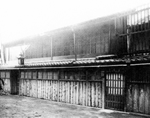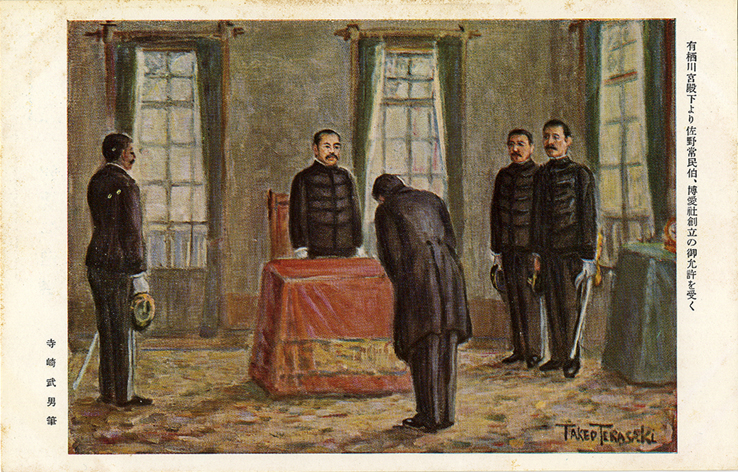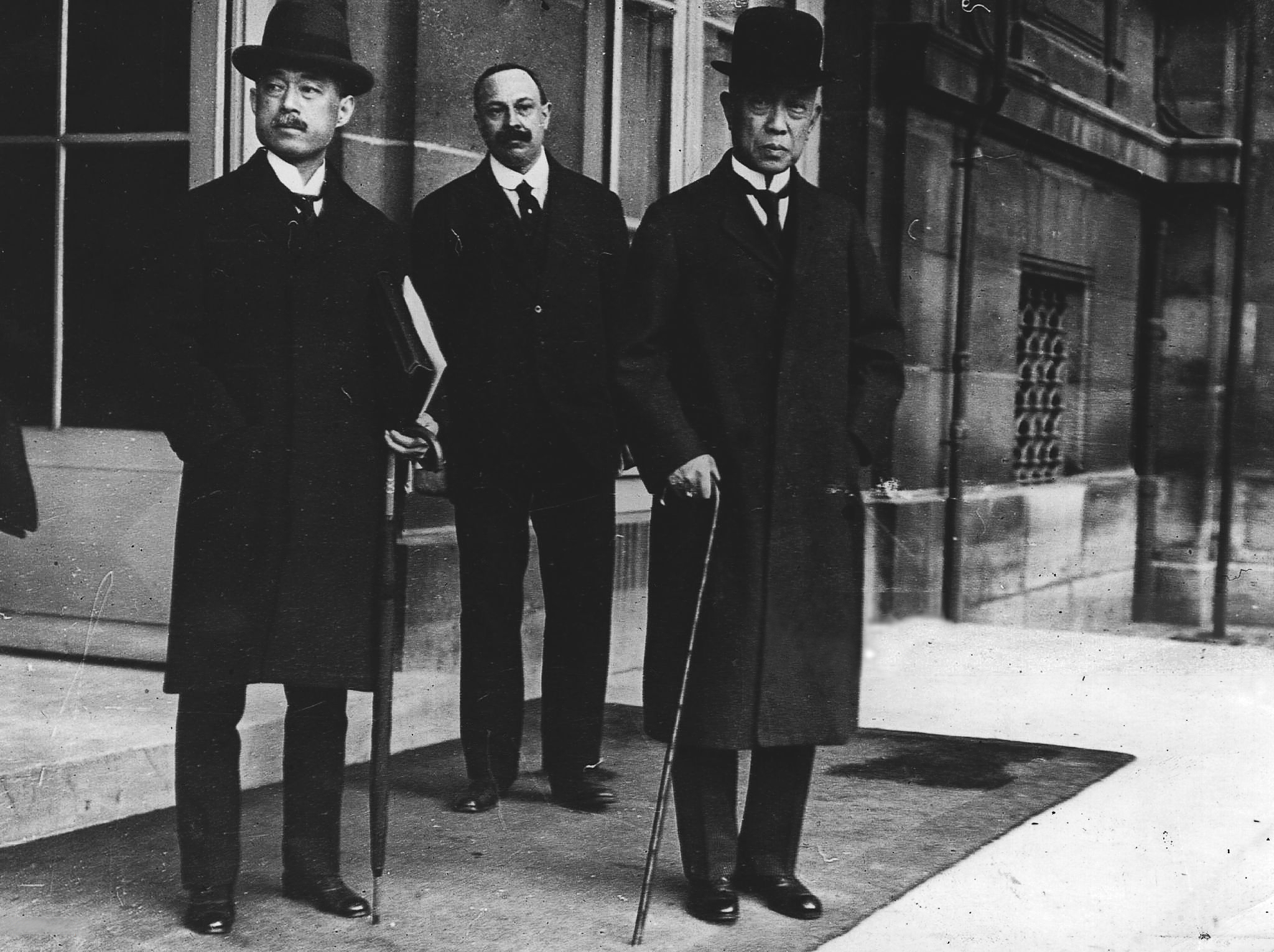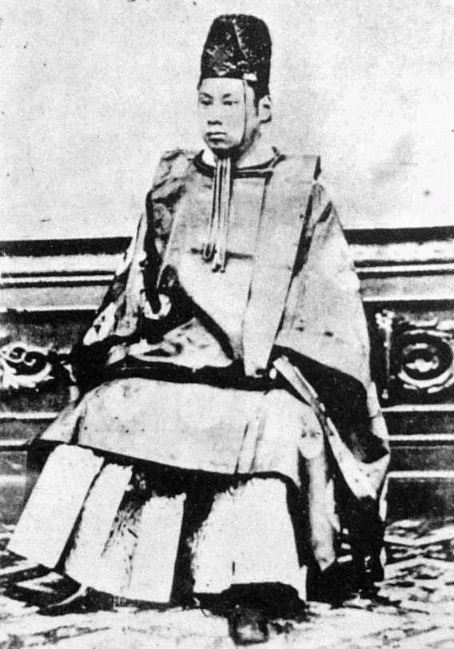|
Genrōin
The was a national assembly in early Meiji Japan, established after the Osaka Conference of 1875. It is also referred to as the Senate of Japan, being the word used to describe the Roman Senate, and other western legislatures named after it. The Freedom and People's Rights Movement and liberals among the Meiji oligarchy had withdrawn from the Meiji government over their efforts to establish a national assembly with increased representative democracy. The Osaka Conference of 1875 attempted to address this issue by the establishment of the , a national assembly whose members (theoretically appointed directly by the Emperor) were drawn from the peerage, upper ranks of the bureaucracy and various scholars. The was only quasi-legislative, in that it had the power to review proposed legislation and make recommendations, but did not have the power to actually initiate any legislation. As an assembly, it replaced the . In 1876, the was given the task of drafting a constitution for J ... [...More Info...] [...Related Items...] OR: [Wikipedia] [Google] [Baidu] |
Terashima Munenori
Count was a Japanese politician and diplomat during the Meiji period. He served as the 3rd Chairman of the Chamber of Elders and Japan's 4th Foreign Minister. Early life Terashima was born to a ''samurai'' family in Satsuma Domain (in what is now part of Akune, Kagoshima Prefecture). He studied ''rangaku'' and was appointed as a physician to Satsuma ''daimyō'' Shimazu Nariakira. In 1862, he was chosen as a member of the group of students selected by the Tokugawa bakufu to study at the University College London in Great Britain. He also visited France, the Netherlands, Belgium, Russia and Portugal. He returned to Japan in 1863, and participated in the defense of Satsuma during the Anglo-Satsuma War. Meiji bureaucrat After the Meiji Restoration, Terashima was appointed a ''san'yo'' (junior councilor) in the new Meiji government. In 1873, he was appointed foreign minister, and negotiated the Treaty of Saint Petersburg (1875), which fixed the national boundaries between Japan an ... [...More Info...] [...Related Items...] OR: [Wikipedia] [Google] [Baidu] |
Osaka Conference Of 1875
The was a meeting held by the major leaders of the Meiji Restoration in Osaka, Japan from January to February 1875 to address the issue of forming a representative assembly. The leaders present included Okubo Toshimichi, Kido Takayoshi, Itagaki Taisuke, Ito Hirobumi, and Inoue Kaoru. In 1873, Itagaki had withdrawn from the government over the ''Seikanron'' issue, and was now loudly agitating for representative democracy as the leader of the Freedom and People's Rights Movement. Likewise, in 1874, Kido had withdrawn from the government due to his opposition to the Taiwan Expedition of 1874. The remaining Meiji oligarchs called for a meeting in Osaka in early 1873 in an attempt to reconcile differences and to persuade Itagaki and Kido to return to the government. As concessions, it was agreed that a Senate (Genrōin) would be established, along with an Assembly of Prefectural Governors. A new Supreme Court, called the Great Court of Cassation ''(Daishin-in)'' would also be establish ... [...More Info...] [...Related Items...] OR: [Wikipedia] [Google] [Baidu] |
Sano Tsunetami
Count was a Japanese statesman and founder of the Japanese Red Cross Society. His son, Admiral Sano Tsuneha, was a leading figure in the establishment of the Scout Association of Japan. Biography Sano was born in Hayatsue, Saga Domain (present-day Saga city, Saga Prefecture) as the fifth son of the low ranking samurai Shimomura Saburōzaemon. In 1831 he was adopted by the physician Sano Tsuneyoshi and was allowed to study at the domain academy ''Kōdōkan''. He accompanied his step-father to Edo in 1837, where he studied Confucianism, but returned to Saga in 1839 to continue his medical education. In 1846, he was sent by the Nabeshima clan, rulers of Saga, to study ''rangaku'' (western learning) in Kyoto under Hirose Genkyō, and subsequently in Osaka under Ogata Kōan. He then returned to Edo in 1849 to study under Itō Gemboku, Totsuka Seikai, and others. In 1851, he returned to Saga to establish his own academy, which received official recognition from Nabeshima ... [...More Info...] [...Related Items...] OR: [Wikipedia] [Google] [Baidu] |
Tsunetami Sano
Count was a Japanese statesman and founder of the Japanese Red Cross Society. His son, Admiral Sano Tsuneha, was a leading figure in the establishment of the Scout Association of Japan. Biography Sano was born in Hayatsue, Saga Domain (present-day Saga city, Saga Prefecture) as the fifth son of the low ranking samurai Shimomura Saburōzaemon. In 1831 he was adopted by the physician Sano Tsuneyoshi and was allowed to study at the domain academy ''Kōdōkan''. He accompanied his step-father to Edo in 1837, where he studied Confucianism, but returned to Saga in 1839 to continue his medical education. In 1846, he was sent by the Nabeshima clan, rulers of Saga, to study ''rangaku'' (western learning) in Kyoto under Hirose Genkyō, and subsequently in Osaka under Ogata Kōan. He then returned to Edo in 1849 to study under Itō Gemboku, Totsuka Seikai, and others. In 1851, he returned to Saga to establish his own academy, which received official recognition from Nabeshima ... [...More Info...] [...Related Items...] OR: [Wikipedia] [Google] [Baidu] |
Government Of Meiji Japan
The was the government that was formed by politicians of the Satsuma Domain and Chōshū Domain in the 1860s. The Meiji government was the early government of the Empire of Japan. Politicians of the Meiji government were known as the Meiji oligarchy, who overthrew the Tokugawa shogunate. Early developments After the Meiji Restoration, the leaders of the ''samurai'' who overthrew the Tokugawa shogunate had no clear agenda or pre-developed plan on how to run Japan. They did have a number of things in common; according to Andrew Gordon, “It was precisely their intermediate status and their insecure salaried position, coupled with their sense of frustrated ambition and entitlement to rule, that account for the revolutionary energy of the Meiji insurgents and their far-reaching program of reform”. most were in their mid-40s, and most were from the four '' tozama'' domains of western Japan (Chōshū, Satsuma, Tosa and Hizen). Although from lower-ranked ''samurai'' families, they ... [...More Info...] [...Related Items...] OR: [Wikipedia] [Google] [Baidu] |
Genrō
was an unofficial designation given to certain retired elder Japanese statesmen who served as informal extraconstitutional advisors to the emperor, during the Meiji, Taishō, and Shōwa eras in Japanese history. The institution of ''genrō'' originated with the traditional council of elders (''Rōjū'') common in the Edo period; however, the term ''genrō'' appears to have been coined by a newspaper only in 1892. The term is sometimes confused with the ''Genrōin'' (Chamber of Elders), a legislative body which existed from 1875–1890; however, the ''genrō'' were not related to the establishment of that body or its dissolution. Experienced leaders of the Meiji Restoration were singled out by the Emperor as ''genkun'', and asked to act as Imperial advisors. With the exception of Saionji Kinmochi, all the ''genrō'' were from medium or lower ranking ''samurai'' families, four each from Satsuma and Chōshū, the two former domains that had been instrumental in the overthrow o ... [...More Info...] [...Related Items...] OR: [Wikipedia] [Google] [Baidu] |
Prince Arisugawa Taruhito
was a Japanese career officer in the Imperial Japanese Army, who became the 9th head of the line of ''shinnōke'' cadet branches of the Imperial Family of Japan on September 9, 1871. Early life Prince Arisugawa Taruhito was born in Kyoto in 1835, as the son of Prince Arisugawa Takahito by Yūko (d. 1841), the eldest daughter of Saeki Yūjō. He was adopted by Emperor Ninkō as a potential heir to the throne, thus making Taruhito the adopted brother of Osahito Shinnō (the future Emperor Kōmei). Arisugawa was a close advisor to both Emperor Kōmei and his nephew by adoption, Emperor Meiji. Prince Arisugawa became engaged to Princess Kazu-no-Miya Chikako, the eighth daughter of Emperor Ninkō, on August 8, 1861. However, the engagement was cancelled by the Tokugawa bakufu so that the princess could marry the ''shōgun'' Tokugawa Iemochi, thus politically sealing the reconciliation between the Shogunate and the Imperial Court. Arisugawa's first wife Sadako (1850–1872) was t ... [...More Info...] [...Related Items...] OR: [Wikipedia] [Google] [Baidu] |
Meiji Period
The is an era of Japanese history that extended from October 23, 1868 to July 30, 1912. The Meiji era was the first half of the Empire of Japan, when the Japanese people moved from being an isolated feudal society at risk of colonization by Western powers to the new paradigm of a modern, industrialized nation state and emergent great power, influenced by Western scientific, technological, philosophical, political, legal, and aesthetic ideas. As a result of such wholesale adoption of radically different ideas, the changes to Japan were profound, and affected its social structure, internal politics, economy, military, and foreign relations. The period corresponded to the reign of Emperor Meiji. It was preceded by the Keiō era and was succeeded by the Taishō era, upon the accession of Emperor Taishō. The rapid modernization during the Meiji era was not without its opponents, as the rapid changes to society caused many disaffected traditionalists from the former samurai ... [...More Info...] [...Related Items...] OR: [Wikipedia] [Google] [Baidu] |
Ōki Takatō
, was a Japanese statesman during the early Meiji period. He was Governor of Tokyo in 1868 and a member of the Japanese Privy Council in 1889.Nussbaum, Louis-Frédéric. (2005). "Ōki Takatō" in . Biography Ōki was born into a ''samurai'' family in Saga, in Hizen province (present-day Saga prefecture). He studied at the domain school ''Kodokan'', and promoted reform of the domain administration. During the Boshin War he was a leader in the Saga forces committed to the overthrow of the Tokugawa shogunate. After the Meiji Restoration, he supervised the transfer of the imperial capital from Kyoto to Tokyo, and was appointed the first Governor of Tokyo. In 1871, he became Education Minister and is credited with establishing Japan's modern educational system. In 1873, he became ''sangi'' (councillor) and in 1876, Justice Minister and was concerned with the punishment of the disgruntled ex-''samurai'' involved in the Hagi Rebellion and the Shimpūren Rebellion. In 1880, he be ... [...More Info...] [...Related Items...] OR: [Wikipedia] [Google] [Baidu] |
Politics Of The Empire Of Japan
Politics (from , ) is the set of activities that are associated with making decisions in groups, or other forms of power relations among individuals, such as the distribution of resources or status. The branch of social science that studies politics and government is referred to as political science. It may be used positively in the context of a "political solution" which is compromising and nonviolent, or descriptively as "the art or science of government", but also often carries a negative connotation.. The concept has been defined in various ways, and different approaches have fundamentally differing views on whether it should be used extensively or limitedly, empirically or normatively, and on whether conflict or co-operation is more essential to it. A variety of methods are deployed in politics, which include promoting one's own political views among people, negotiation with other political subjects, making laws, and exercising internal and external force, including wa ... [...More Info...] [...Related Items...] OR: [Wikipedia] [Google] [Baidu] |
Defunct Upper Houses
{{Disambiguation ...
Defunct (no longer in use or active) may refer to: * ''Defunct'' (video game), 2014 * Zombie process or defunct process, in Unix-like operating systems See also * * :Former entities * End-of-life product * Obsolescence Obsolescence is the state of being which occurs when an object, service, or practice is no longer maintained or required even though it may still be in good working order. It usually happens when something that is more efficient or less risky r ... [...More Info...] [...Related Items...] OR: [Wikipedia] [Google] [Baidu] |
Ian Buruma
Ian Buruma (born December 28, 1951) is a Dutch writer and editor who lives and works in the United States. In 2017, he became editor of ''The New York Review of Books'', but left the position in September 2018. Much of his writing has focused on the culture of Asia, particularly that of China and 20th-century Japan. He was the Paul W. Williams Professor of Human Rights and Journalism at Bard College from 2003 to 2017. Early life and education Buruma was born and raised in The Hague, Netherlands. His father, Sytze Leonard "Leo" Buruma, was a Dutch lawyer and the son of a Mennonite minister, and his mother, Gwendolyn Margaret "Wendy" Schlesinger, a Briton of German-Jewish descent. He went to study at Leiden University in 1971, and obtained a Candidate degree in Chinese literature and History in 1975. He subsequently pursued postgraduate studies in Japanese cinema from 1975 to 1977 at the College of Art (Nichidai Geijutsu Gakko) of the Nihon University (Tokyo, Japan). Career Overvi ... [...More Info...] [...Related Items...] OR: [Wikipedia] [Google] [Baidu] |







